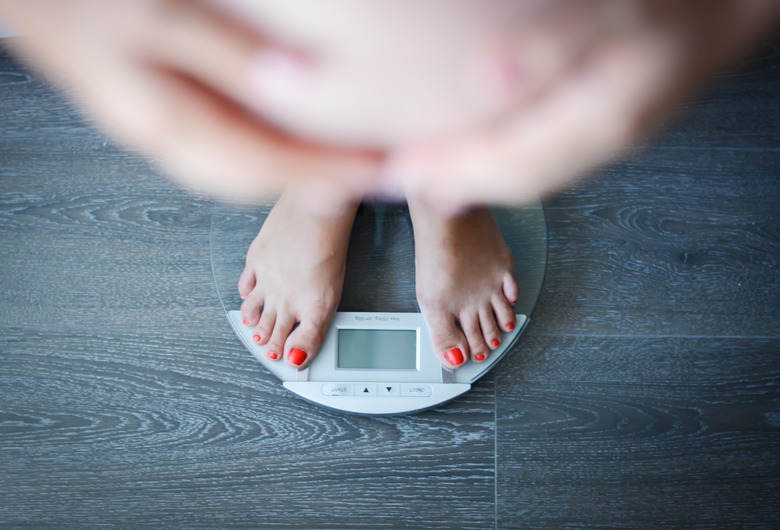Tools Used To Measure Mass
The mass of an object represents the amount of matter within that object. Measuring mass does not necessarily measure weight, as weight changes depending on the effect of gravity. Mass, however, does not change regardless of where an object is located. The amount of matter remains the same. To measure mass, scientists use various tools depending on the size and location of the object.
TL;DR (Too Long; Didn't Read)
Mass is the amount of matter in an object. A number of tools exist for measuring mass in different environments. These include balances and scales, measurement transducers, vibrating tube sensors, Newtonian mass measurement devices and the use of gravitational interaction between objects.
Balances and Scales
Balances and Scales
For most everyday objects, scientists use a balance to obtain an object's mass. A balance compares an object with a known mass to the object in question. One example of a balance is the triple beam balance. The standard unit of measure for mass is based on the metric system and is typically denoted as kilograms or grams. Different types of balances include beam balances and digital scientific balances. In space, scientists measure mass with an inertial balance. This type of balance uses a spring to which an object of unknown mass is attached. The level of vibration of the object and the stiffness of the spring help to find the object's mass.
Within the home, modern digital and spring scales aid in determining mass. A person stands on a scale, which obtains body weight. A digital scale calculates the person's mass by taking the body weight and dividing it by gravity.
Space Linear Acceleration Mass Measurement Device (SLAMMD)
Space Linear Acceleration Mass Measurement Device (SLAMMD)
A more sophisticated mass measuring device, the SLAMMD measures the in-orbit mass of humans on board the International Space Station. SLAMMD is a rack-mounted device that relies on Sir Isaac Newton's Second Law of Motion, whereby force equals mass times acceleration. By using two springs that exert a force against a person, this device determines the person's mass via force and acceleration.
Measurement Transducer
Measurement Transducer
Occasionally, mass cannot be determined by using a balance. For measuring the mass of a liquid in a calibrated tank, scientists use transducers. A transducer measures mass properties of the liquid in a static state. The transducer sends a signal to a processor, which makes the mass calculations. An indicator, in turn, displays the mass. Taking the measured mass of liquid below the transducer and subtracting the mass of vapor, mass of a floating roof, mass of bottom sediment and water yields gross mass.
Vibrating Tube Mass Sensor
Vibrating Tube Mass Sensor
Measuring physical properties on the microscopic level presents challenges to scientists. One effective method for measuring microgram-sized biological samples in fluid is the vibrating tube mass sensor. First, the sensor determines the buoyant mass of an object by using the fluid's density. After finding buoyant mass, absolute mass can be found by measuring the buoyant mass of the object in fluids of different densities. This affordable, portable sensor provides useful data for biomaterials such as embryos, cells and seeds.
Gravitational Interaction
Gravitational Interaction
For enormous objects in space, scientists rely upon gravitational interaction of the object in question with nearby objects. To determine the mass of a star, you need to know the distance between it and another star and the time of their respective movements. Scientists also use the speed of rotation to measure the mass of galaxies.
References
- UCLA: Mass, Weight and, Density
- Cornell University Ask an Astronomer: How Do We Weigh Objects in Space? (Beginner)
- PLOS One: Measuring the Mass, Volume, and Density of Microgram-Sized Objects in Fluid
- NASA International Space Station: Space Linear Acceleration Mass Measurement Device (SLAMMD)
- Australian Government National Measurement Institute: Measuring Systems for the Mass of Liquids in Tanks
- UCSB Materials Research Laboratory: UCSB ScienceLine
- Smithsonian.com: New Device Can Measure the Mass of a Single Molecule
- Space.com: In First, Einstein Relativity Experiment Used to Measure a Star's Mass
Cite This Article
MLA
Hermance, Dianne. "Tools Used To Measure Mass" sciencing.com, https://www.sciencing.com/tools-used-measure-mass-5305130/. 14 May 2018.
APA
Hermance, Dianne. (2018, May 14). Tools Used To Measure Mass. sciencing.com. Retrieved from https://www.sciencing.com/tools-used-measure-mass-5305130/
Chicago
Hermance, Dianne. Tools Used To Measure Mass last modified March 24, 2022. https://www.sciencing.com/tools-used-measure-mass-5305130/
